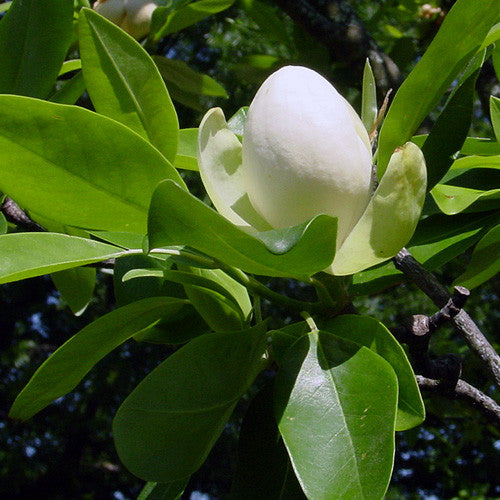Hardy, deciduous to semi-evergreen, Eastern North American tree Description: Fragrant, creamy-white, cup-shaped flowers open in early summer, followed by slender-seeded, cone-like fruit; leaves have a distinctive silvery underside on multiple stems. Habit: Grows 10 to 40 feet high and wide. Culture: Prefers full sun to part shade and moist, but well-drained soil rich in organic matter Hardiness: USDA Zones 5 through 9 Origin: North America Attributes: Fragrant flowers, showy fruit, rain garden Jefferson documented Thomas Jefferson planted Sweet Bay trees adjacent to the house at Monticello and also observed the species flowering on May 22, 1808. Sweet Bay was the first Magnolia cultivated in European gardens. It was introduced to England from Virginia by John Bannister in 1688. In 1705, a pioneer natural historian from Virginia, Robert Beverly, wrote of the blossoms: "The pleasantest smell in the world." This was the most common Magnolia sold by American nurseries early in the 19th century. zone5,zone6,zone7,zone8,zone9
| 
